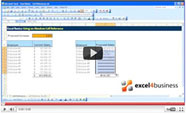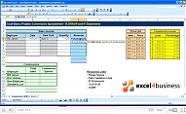Excel Help - How to Use IF Formulas in Excel
In this video you’ll learn how to use IF formulas. This is a useful tool if you have lot of data and need to make decisions based on different conditions.
In this example, we’ll look at sales quotas to determine if a salesperson has earned a bonus or not. If an employee has earned more than $10,000, they’ve earned a bonus. Rather than determining whether an employee has earned a bonus or not manually in each individual case, we can let Excel make the calculation automatically with the IF function.
Start by selecting the cell where you would like to see the results of the formula.
The next step is writing the function.
Type an equals sign, then IF, then an open parenthesis.
Now type the conditions for the formula.
In this case, whether a salesperson has earned a bonus or not depends on whether they have earned more than 10,000.
The sales quota in the first instance is in cell B2.
To set the condition that B2 needs to be greater than or equal to 10,000, we’ll use a greater-than (>)and an equals (=)sign.
=IF(B2>=10000
To tell Excel what to do if the condition is false, type another comma. If you want toe “bonus” cell to remain blank if the employee didn’t reach 10 000, I’ll just type a space enclosed in double quotes. If you want Excel to type “No bonus”, put that in the quotation marks.
Close the parenthesis and when you press enter, the formula will be applied.
To apply the formula in the rest of the column, drag the fill handle down by clicking on the small square in the bottom right-hand corner of the cell which contains the formula and dragging it down.



